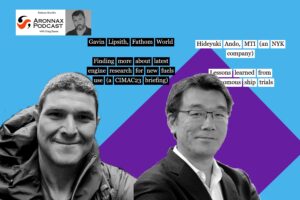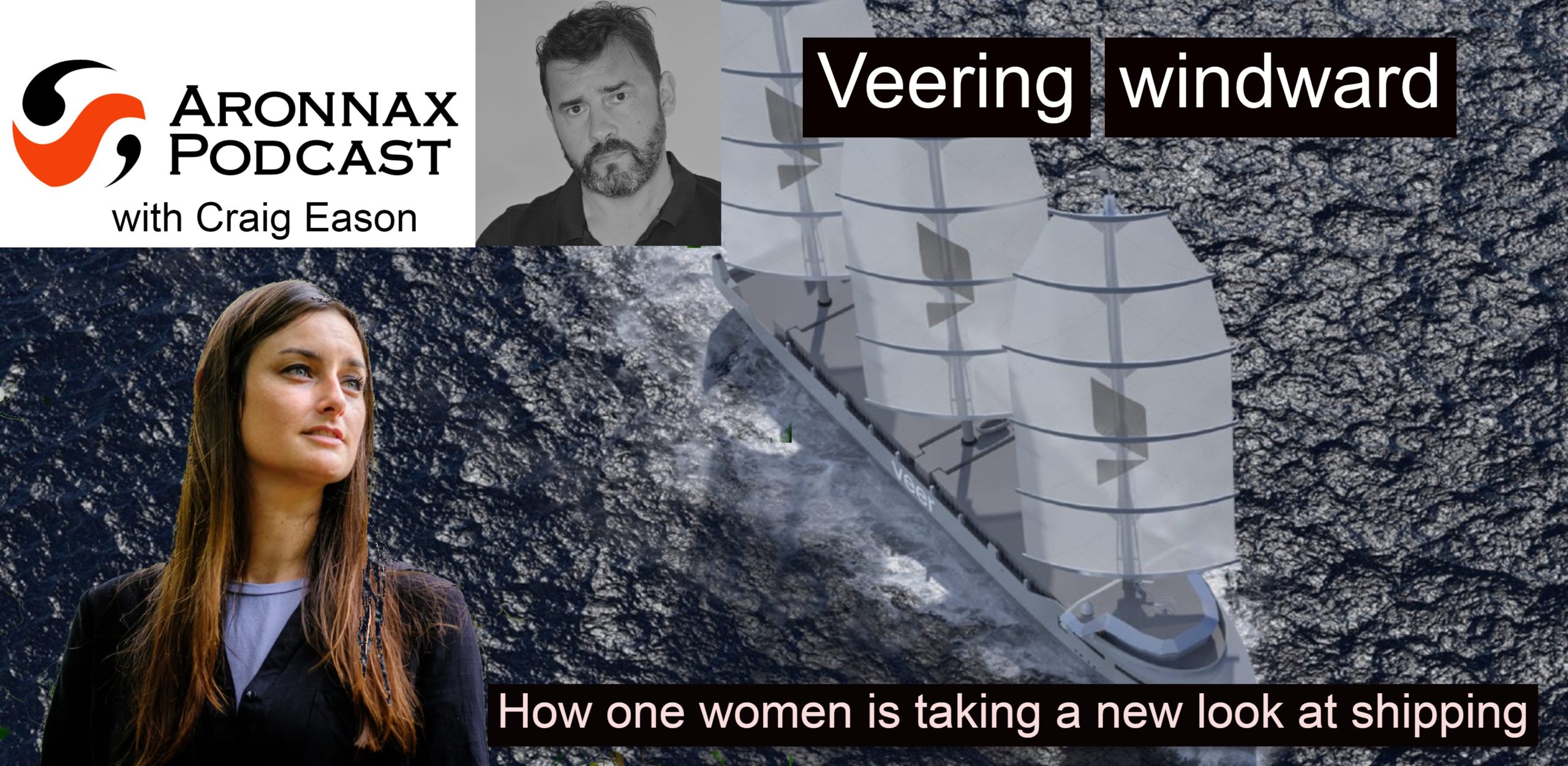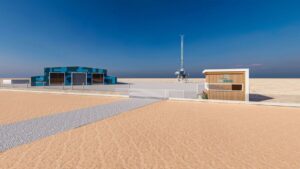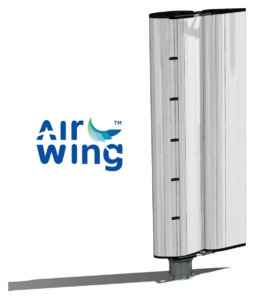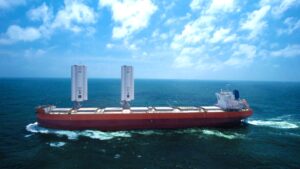Episode transcript:
Craig Eason
Hello, and welcome to another episode of the Aronnax Podcast, the podcast that focuses on the changes to the maritime shipping and ocean space. I’m Craig Eason editor of Fathom World and your podcast host. And with me today, for the second time, actually is Danielle Doggett. She appeared on this podcast or must have been about a year and a half ago, I think when I spoke to her about plan, she had to build a wooden cargo vessel in a jungle to sail it up and down the West coast of the USA taking, taking basically wholesome cargoes from Costa Rica up to Canada and anywhere else you could think of. Danielle, welcome back to the podcast.
Danielle Doggett
Hi, Craig, thank you so much for having me back. Again. I guess I didn’t ruin the podcast interview last time. So thank you for having me on your show. Once again.
Craig Eason
You’re welcome. Now, obviously, I was talking about a year and a half ago about the Ceiba. Where are you with that it looked like you were quite close to getting finished, and you had a lot of plans, but you had a lot of things that you needed to get done yet. So where are you with the Ceiba at the moment?
Danielle Doggett
So our ship in Costa Rica is still being built, the team is progressing very well. They are currently working on the interior planking or ceiling planking, which can be four inches thick of tropical hardwoods that are steam bent into place. So a massive amount of work that is being worked on by our team, which is up to around 40 people down there. Around 15 of them would be considered shipwrights or apprentice shipwrights, and that is progressing very, very well.
Craig Eason
When When do you now implant plan to get it into the water? Because it seems to be going well, but you seem to have hit a few obstacles.
Danielle Doggett
Yeah, it’s not actually that we’ve hit some obstacles is that the company decided to shift a little bit of energy to actually acquire an existing ship, which is called Vega, and invest a significant amount of our energy into getting Vega on the water now, because we decided for the company that it was more powerful and impactful to start shipping sooner, and we had a lot of support from Cafe William, our largest, our largest client, who are a coffee importer.
We received quite a lot of support and encouragement from them to get a ship on the water now. So really Ceiba has suffered from a little bit of diversion, but in the end is to strengthen the company as a whole.
Craig Eason
Okay, so when when’s the new kind of launch date, you could say for Ceiba.
Danielle Doggett
the launch date is still it’s approximately 1.5 years from now, we did run into not any issues with shipbuilding, but there are some issues more with the launch itself. And so we’ve been trying to acquire the shipyard and actually purchase that land to build a launch railway marine railway. So the permits around that have been kind of dragging on. And that that’s posed a little bit more of a problem. But the ship construction herself it’s just moving forward very well.
Craig Eason
So you’ve got Vega, which is able to take cargo now is it to demonstrate the the meaning of your business model really to sort of offer cargo owners that want to have zero emissions to have a clean supply chain to be able to actually demonstrate that you’ve got Ceiba, but now you’ve got a new plan. Nothing like having a lot of things to do on your plate here.
So you’ve now got a new company not wanting to have two projects on your hand, you’ve now gone for a third project called Veer. So this is a new idea that you’ve got and this is why you’re currently not in Costa Rica. But in Europe, in the Netherlands, I guess the weather’s substantially different. But what are you doing in the Netherlands? What’s Veer all about?
Danielle Doggett
Yeah, well, it’s interesting, I do get have received some people questioning a little bit what I’m up to because it does feel like to a lot of people out there three independent projects going on here, but it’s not entirely true.
With Ceiba that team is really quite independent moving forward building the ship, and I don’t have a lot of day to day. responsibilities with Ceiba at this point. I’m more focusing on the communication, collecting funds and investment and working with cargo owners to secure cargo for the future for all ships that would be for the Sail Cargo Inc fleet – so that’s the wooden ships.
I’m currently here in the Netherlands because Vega, the Swedish ship that we just purchased, is undergoing a refit so that she can sail cargo and we will be leaving very very soon to cross the ocean and it’s felt really great – just earlier this week, our team actually took some crowbars to the old galley and to the some of the cabins so that we’ve actually – really, I don’t want to use too much language, but very quickly and expeditiously, got lots of things out of the boat. And now we have quite a large cargo hold.
So with Vega, we’re going to be moving coffee in January for Cafe William, from Colombia to New Jersey, so on the Eastern Seaboard. But what I’m doing with Veer is really in response to cargo owners that wanted to be able to ship a larger amount of cargo in a more standardized fashion, primarily in shipping containers. So with Veerr, I do maintain almost all of the same direction that I have for the past 12 years with my with my work, but now we’re just taking that to a little bit more of a commercialized and industrialized platform, which is using these steel vessels and containers.
Craig Eason
So what’s going to be so dramatically new here for what the shipping industry is used to? Because container vessels are not new. But I guess these are with sails on them, so a sail powered box ship? Is that right?
Danielle Doggett
Yeah, yeah, it’s interesting. I get different approaches, people asking me some will say, this is so innovative, we’ve never seen anything like this before. And then the next conversation I’ll have, you know, was with the Innovation Forum for COP 26 last year, and they said, we can’t have you speaking Danielle, you’re not presenting anything innovative and so I just laugh about that. Because, in reality, I’m not presenting anything innovative, but I suppose it’s in the way that these elements are being brought together that is innovative. it ends up being a product that is a little bit unique.
So we are building – We will be building 100 meter steel container ships using DynaRig. It is primary wind propulsion, and an auxiliary engine of green hydrogen or to use today’s sort of pop culture terms. Hydrogen assist,
Craig Eason
Okay, so hydrogen assist with a Dyna Rig. What’s a dynamic?
Danielle Doggett
Yeah, so DynaRig is a mature technology as quoted by DNV. And DynaRig is square sail technology taken sort of, to the new level, was actually originally designed by a German engineer in the 1960s. And it is square sail technology, but reduced to the bare minimum, so free standing without stays or droughts. And the applications that we have today, which we can see on the mega yachts, Black Pearl, and Maltese Falcon, is that you can be setting all these sails with the push of a button, and you can set or dose all sail in as little as six minutes.
Craig Eason
You meaning that you can collapse the sail. So if there’s bad weather, you can sail on the hydrogen assist engine if need be with the sail to collapsed, just the masts left upright,
Danielle Doggett
Exactly.
Craig Eason
What’s the timespan that you’re looking at here? And what do you need to get done? You mentioned before that you’re still looking for some funding for this.
Danielle Doggett
Yes, absolutely. So right now with Veer, we are in the early stages of the company, it is registered in the Bahamas, and we are currently accepting investment through a convertible note. We are actually yes seeking support for this at this point. And we will be looking at a later time for financing from shipyards.
Our timeline is now that we have received our approval in principle from the American Bureau of Shipping, we will be submitting bid packages to shipyards that we’ve already toured, hopefully by the time this podcast is aired and two weeks from now, and if possible if everything falls into place, we would love to have selected a shipyard by the end of this year.
Craig Eason
How long do you think it’s going to take to build it?
Danielle Doggett
There are two components that we really need to talk about when we say how long will it take to build it. The multiple shipyards I’ve spoken to have indicated at build time for the hull to launch, as low as seven months which sounds pretty quick to me and as long as 12 months to build the hull.
But the other aspect or other part of this is the Dyna-Rig itself which will take approximately 18 months to to fabricate which includes some engineering, which is why we want to which is why we have engaged with Southern spars to begin that phase of the engineering as soon as Paul suitable. So even if we haven’t selected a shipyard yet, we can start cutting down on that 18 months delivery time.
Craig Eason
Do I understand right that there might be more than one of these vessels?
Danielle Doggett
Yes, absolutely. So if everything falls into place again, I have to say that because we haven’t had these conversations, these critical conversations with some shipyards yet, but if everything falls into place, we will be building two simultaneously or consecutively. And we have engaged with the architects, Dykstra naval architects, with an agreement to build six.
Craig Eason
That’s a significant investment you’re looking for and quite a large fleet of unique vessels that you’re going to try and achieve.
Danielle Doggett
Yes, in classic Daniel fashion, I will say something probably a little too harsh. And we would be advised not to say I would with Veer, we aim to have the largest clean container fleet in the world, and the largest green hydrogen fleet in the world.
We also anticipate registering all of our ships in the Bahamas, in support of the green and blue economy goals that the Bahamas maintains as a government level, which would make the flag state of Bahamas the largest green flag registry in the world. One of
Craig Eason
the things that I noted when we spoke about Sabre, was the fact that you had a very close and very early relationship with the cargo owners. You mentioned the coffee companies by now I know that there are other cargo owners that you’ve been talking to, would I be right, I’m guessing this is a similar approach that you’re taking with the via vessels, that your relationship with the cargo owners is as important as ever, and that you’re looking for the kind of cargo owners that want to really maximize having a clean supply chain?
Danielle Doggett
Absolutely, you’re absolutely correct. So yeah, in that same fashion and just being again, true to myself, maintaining a strong, and building strong relationships, with our stakeholders, is a fundamental way that I move forward with all of these businesses and companies and ideas.
So the way I move forward with clean shipping is maybe a little bit different from others. So I’m not pushing policy or subsidies or governments not to say there’s anything wrong with that. It’s just not my way. So I work with private stakeholders and companies and private sector to try to push things forward from another angle.
I take inspiration from Uber and Airbnb not commenting on the actual companies, but their approach where they came at that from the private sector was something so disruptive, and innovative, and positive for for what move forward to shake everything up. That with the private sector, they actually pushed policy forward, or rather, policy was running to catch up with them.
And so we are working very closely to develop relationships with cargo owners, we recently received a really wonderful statement of support from the cosmetics company Lush from the UK. So you can read about that in our recent press release. But yeah, cargo owners and private sector are what will be pushing us forward.
Craig Eason
It’s an interesting business model. I’ve spoken to some manufacturers and I’ve heard press releases or sorry, I’ve seen press releases and I’ve heard statements from companies who expound and sort of really try and promote their green credentials, but a lot of it comes across as greenwashing. Are you worried that you’re going to be become part of a sort of a green washing campaign that they will, the companies might put one or two cargoes on a Veer vessel or Ceiba vessel, but in reality, the larger part of their cargo was will go on more traditional? Because it’s cost effective for them?
Danielle Doggett
Is it cost effective for them? Up to 60% of overhead costs of those vessels? Is fossil fuel consumption?
Craig Eason
Are you telling me that you’re going to have a competitive rate compared to the last some of the larger, larger companies?
Danielle Doggett
Well, one of the things that we will struggle with is the size of our vessel. So it’s only 100 meters, this is not a giant Maersk ship. But when we look at the price of green hydrogen fuel, which again is just an auxilliary, or assist, and we put in all the other factors that we have a knowledge about, we should be able to compete in quite a competitive manner, financially speaking.
Craig Eason
But I guess also with the companies that you are signing, you’re signing reasonably long term, kind of charter arrangement. So there’s a long term arrangement to shift cargoes from one place to the other.
Danielle Doggett
Yeah, exactly. So I was going to say that in response to your greenwashing question, is there’s kind of two different answers I would say. One is, we will be looking for long term contracts, absolutely to support our financing. But at the same time, if a major corporation like Coca Cola, or whomever, that’s just an example want to ship green? Why would I stop them?
Craig Eason
I’m aware that the the simple fact about global trade is that there are, you know, a large number of very large vessels trading around the world on very significant routes. But we have to start somewhere, don’t we?
Danielle Doggett
Yeah. and if for us if we can ship—So I don’t need to necessarily pay attention to what their numbers say, as long as they’re not making claims that are, you know, misconstrued in some way. But if they are shipping 1% of their cargo in a green way, and that fills our ships, 100% I mean, that that makes our ships feel pretty good, that makes our business plan look pretty strong, which would actually enable us to have conditions where we could expand our fleet.
So absolutely, I mean, I’m not going to turn away a company just because they don’t shift 100% of their cargo to us immediately. It’s a transition for everyone involved.
Craig Eason
And finally, just in terms of the approach that you see, or rather, the the way the industry is, is approaching you. When you came onto the scene with Ceiba, it was significantly different, but I’ve seen a large number of wind assist solutions and even other wind solutions… Are you seeing a significant change in acceptance of what you’re doing and what other companies are doing in providing wind solutions to the shipping industry?
Danielle Doggett
Yes, I can say that I have seen more acceptance. I think a lot of people, a lot of different players in the industry are pushing from all kinds of different angles.
As I mentioned earlier, you know, there’s policy, there’s private sector, there’s engineers coming up with designs, there’s all kinds of different players pushing towards that, and it’s definitely increased. Absolutely.
Craig Eason
Thank you very much for coming on to my podcast a second time much appreciated it.
Danielle Doggett
Well, thank you so much for having me. I really appreciate getting to share a little bit about Veer.
Craig Eason
For those listening to the podcast. Remember to subscribe to this podcast and go on to the Fathom World website and subscribe to our regular newsletter to make sure that you stay updated with all the change. So that’s all for me for this time. Until the next time, goodbye.
More Aronnax podcast episodes
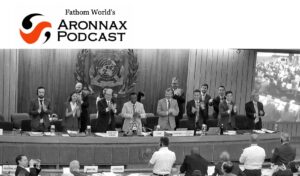
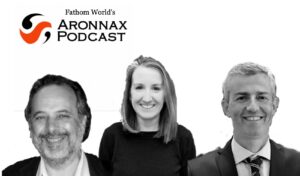
Aronnax: July 3rd
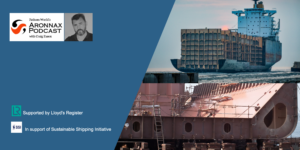
Aronnax: June 29th – Ships and their steel: Turning it green
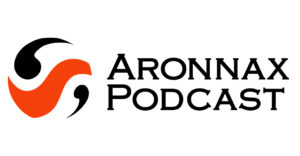
Aronnax: June 19th

Aronnax: June 4th
